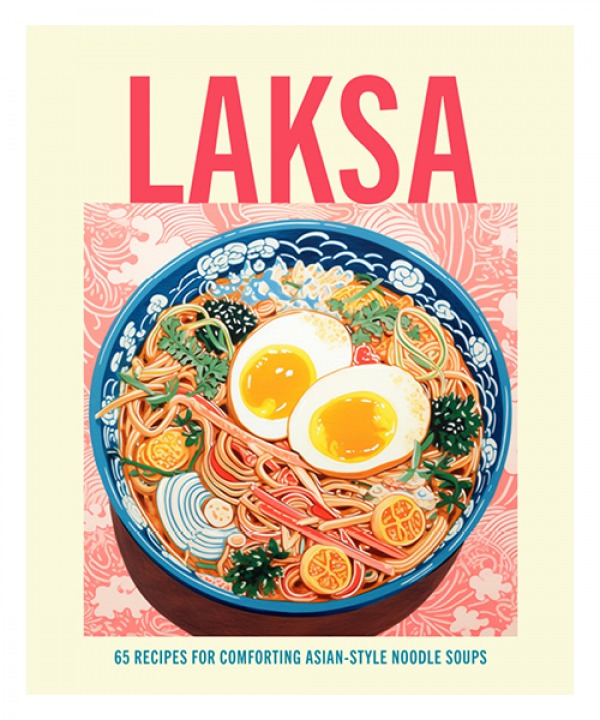
Recipes extracted from: Laksa
published by Ryland Peters & Small (£14.99)
Photograph © Ryland Peters & Small
Join Our World... Sign up for our exclusive newsletter.

Be inspired every day with Living North

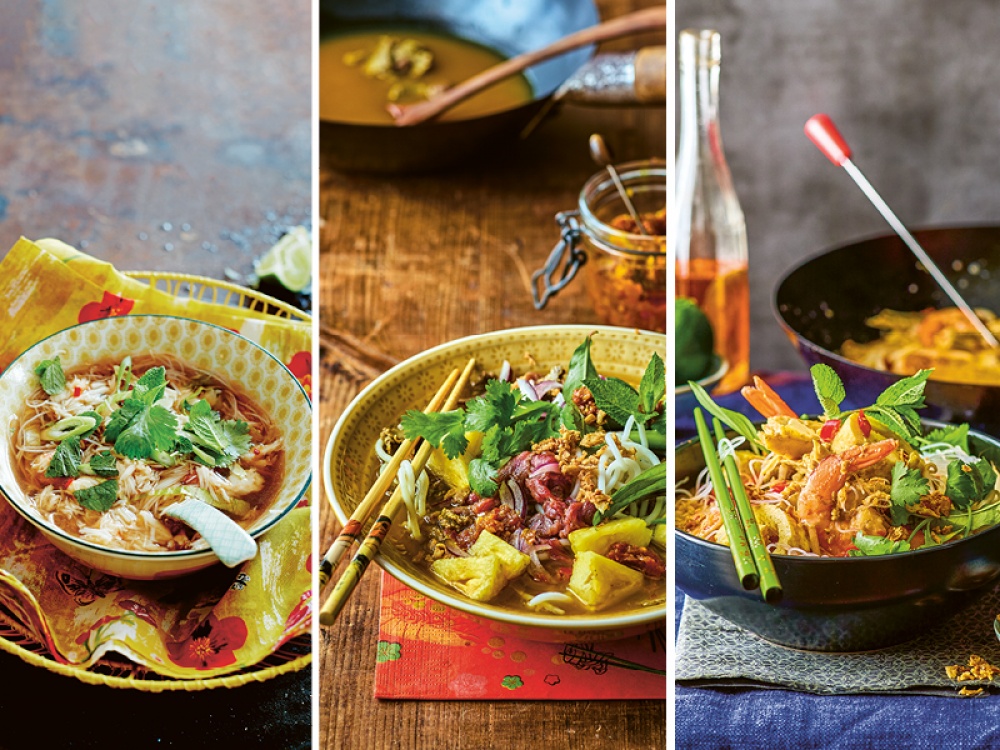
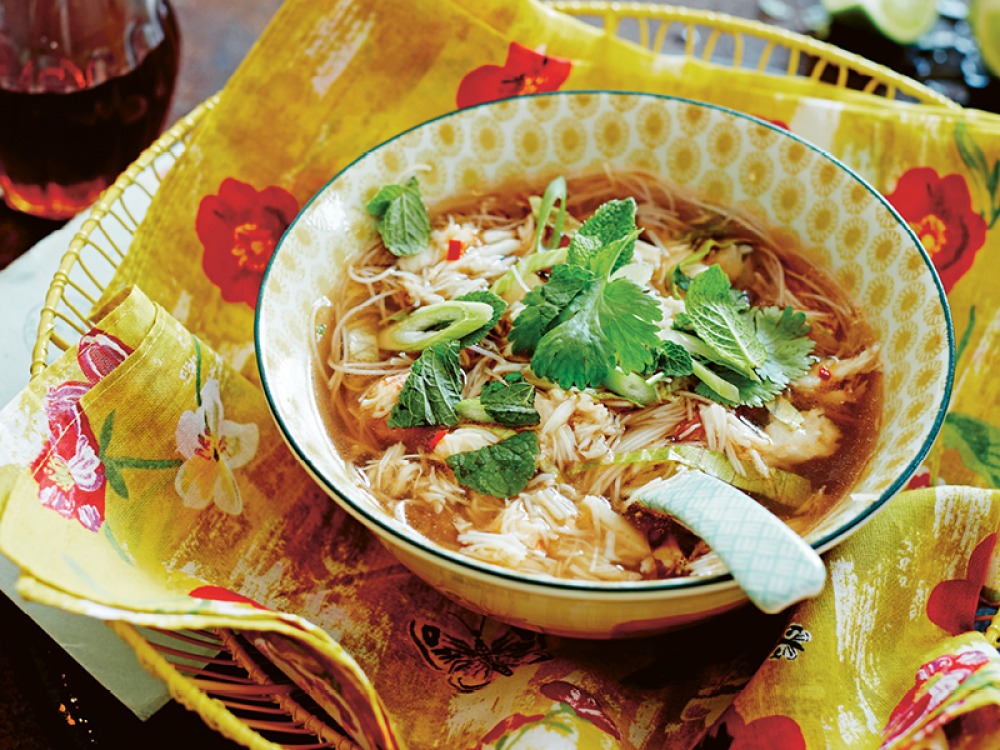
This aromatic noodle soup is a speciality of central Vietnam, where all productive land is given over to cultivating rice. The authentic recipe uses tiny freshwater crabs commonly found in paddy fields that are pounded to a paste and made into dumplings, but here, for ease, the crabmeat floats freely in the soup. You don’t even have to go crab hunting, use fresh or frozen prepared white crabmeat.
Put the noodles into a bowl and cover with boiling water for 10 minutes, or until soft. Drain, rinse under cold running water and drain again.
Using kitchen scissors, chop them into manageable lengths, about five centimetres and set aside. Put the dried shrimp into another bowl, add 125ml boiling water and soak for 20 minutes. Drain and reserve the shrimp and their soaking water.
Heat the oil in a wok, swirl to coat, then add the shallots, garlic and chillies. Stir-fry for one minute, then add the tomatoes, crabmeat, soaked shrimp, their soaking water and the chicken stock. Season the soup with fish sauce, sugar and vinegar and bring to the boil. Reduce the heat to low and let simmer for five minutes.
Turn off the heat and stir in the noodles and lettuce.
Ladle the soup into four bowls and serve with the spring onions, coriander and mint leaves and lime wedges on top.
Recipe by Kimiko Barber.
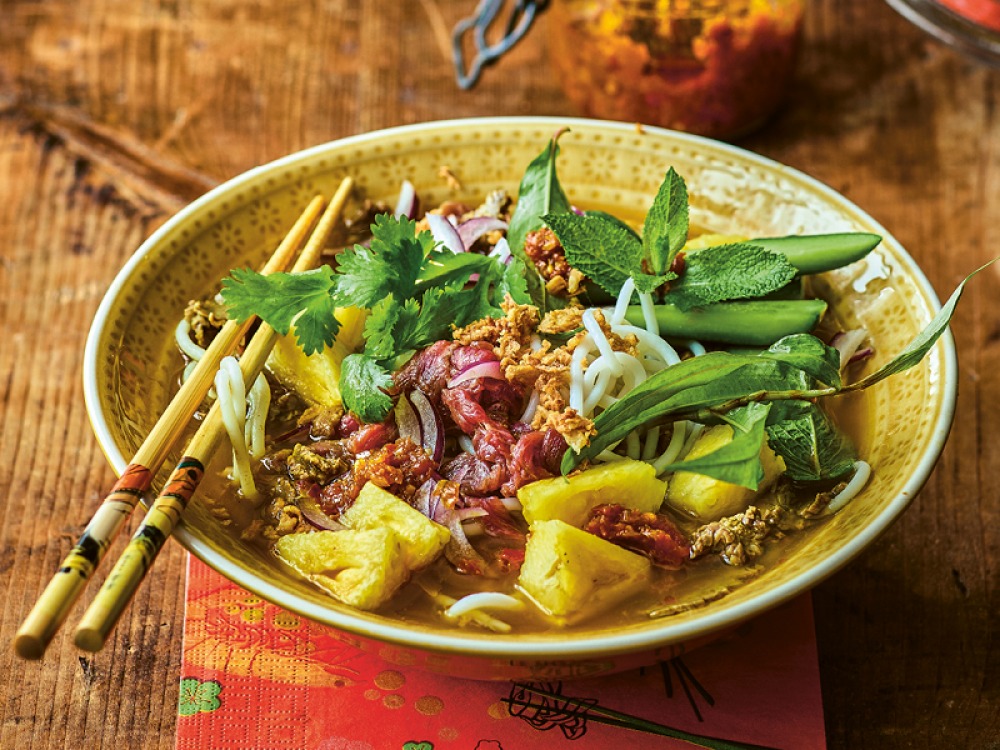
This is a beef version of the classic Penang Asam laksa soup; a soup that is hot, salty and sour made without coconut milk. The clear broth is packed full of fantastic flavour, the sourness is derived from the use of tamarind.
Start by freezing the beef fillet. Wrap in cling film and freezer for at least one hour so that it is firm enough to slice thinly. About 10 minutes before serving the soup remove the beef from the freezer and slice as thinly as you can.
Make the soup. Put the beef stock, chuck steak, herbs and spices in a large saucepan and bring to the boil, removing any scum from the surface. Cover and simmer over a low heat for one to one and a half-hours until the beef is tender. Strain the stock, discarding the flavourings and return to the pan. Remove the beef, cover loosely with foil and set aside to cool. Once cool, shred as finely as you can. Set aside.
Meanwhile, make the laksa paste. Soften the dried chillies in boiling water for 30 minutes. Drain the chillies and finely chop the flesh. Wrap the shrimp paste in a small square of foil, spreading it in a thin layer. Dry fry the parcel for one to two minutes each side to ‘toast’ the paste. Set aside until cool enough to handle. Unwrap the parcel and scrape the shrimp paste into a food processor or blender with the softened chillies, shrimp paste and all the remaining paste ingredients. Blend to form a smooth paste.
Return the beef stock to a simmer and stir in half the laksa paste. Simmer gently until reduced to about one litre. Strain the stock again and return to the pan. Stir in the tamarind water and return to a simmer. Taste the soup and add salt and sugar to balance the flavours, if necessary.
Just before serving, cook or rehydrate the noodles. Drain and divide between noodle bowls. Top the noodles with the raw beef slices and ladle over the soup. Serve topped with all the garnishes.
TIP: Store the remaining half of laksa paste for use another time. It will keep well in a screw top jar, in the fridge for up to two weeks.
Recipe by Louise Pickford.
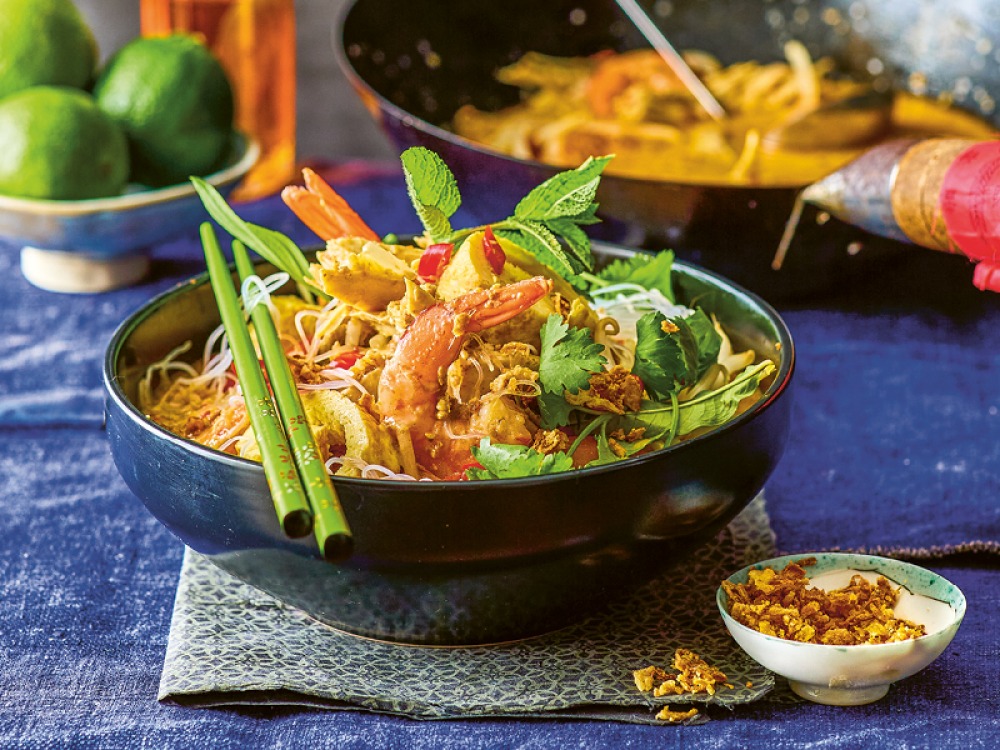
This laksa is from Sarawak, one of the two Malaysian states on the Island of Borneo. It comes in various guises but commonly includes both chicken and prawns, coconut milk and tamarind.
Start by making the laksa paste. Place the whole spices in a frying pan and dry fry for two to three minutes until they are golden and start to give off their lovely aroma. Cool and then grind to a fine powder using a spice grinder.
Soak the dried chillies in boiling water for 30 minutes until softened. Drain, reserving the liquid and roughly chop the chillies. Place in the food processor or blender with shallots, garlic, galangal, long red chillies, lemongrass, macadamia nuts, sesame seeds and the toasted spices. Blend to make as smooth a paste as possible, adding a little of the reserved chilli liquid to loosen the paste, if necessary.
Heat the vegetable oil in a wok and add the paste. Cook, stirring over low heat for 15–20 minutes until the oil is absorbed and the paste a little darker. Remove from the heat, cool slightly and then stir in the tamarind water, sugar and salt.
Meanwhile, make the soup. Peel the prawns and reserve the heads and tails. Remove the vein that runs down the back of each one, set aside. Heat the oil in a large saucepan and add the prawn shells and heads, fry over a medium heat for three minutes until browned. Add the chicken stock, bring to the boil and simmer gently for 15 minutes.
Make the omelette strips. Heat a little extra oil in a small frying pan, pour in the beaten eggs and fry gently to make a thin omelette. Remove from the pan, cool briefly and then roll up firmly. Cut the omelette into thin slices and set aside.
Strain the prawn stock through a fine sieve and return to the pan. Stir in the laksa paste (store the remainder in a jar in the fridge for another use), return to the boil and simmer for five minutes. Add the whole prawns and simmer for three minutes, then stir in the coconut milk, shredded chicken and bean sprouts. Heat through for one minute until the prawns are cooked, then season to taste with salt and sugar.
Just before serving, cook or rehydrate the noodles. Drain and divide between noodle bowls. Then spoon over the laksa broth and serve topped with all the garnishes.
Recipe by Louise Pickford.

Recipes extracted from: Laksa
published by Ryland Peters & Small (£14.99)
Photograph © Ryland Peters & Small